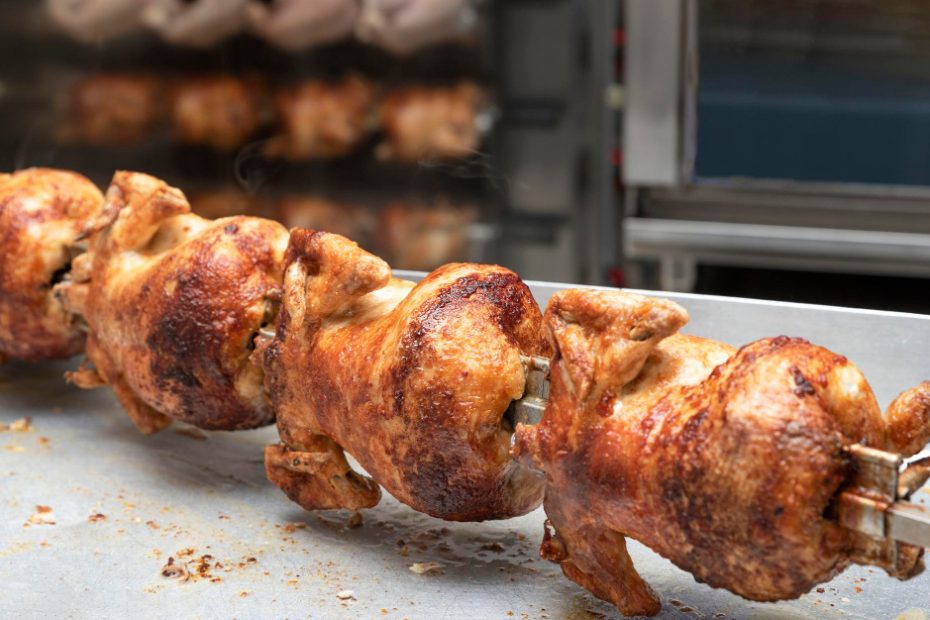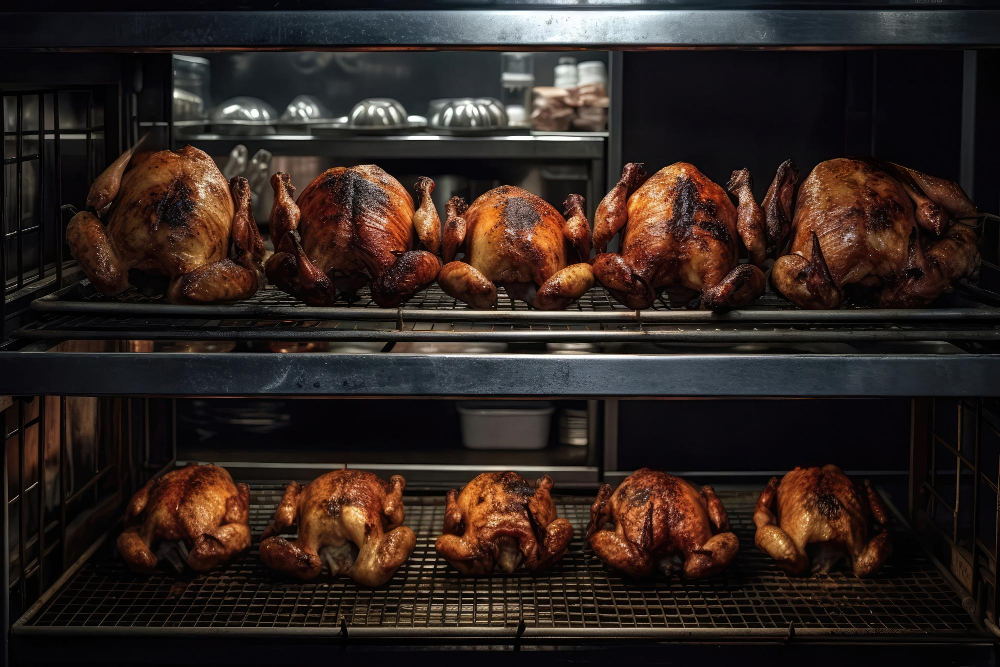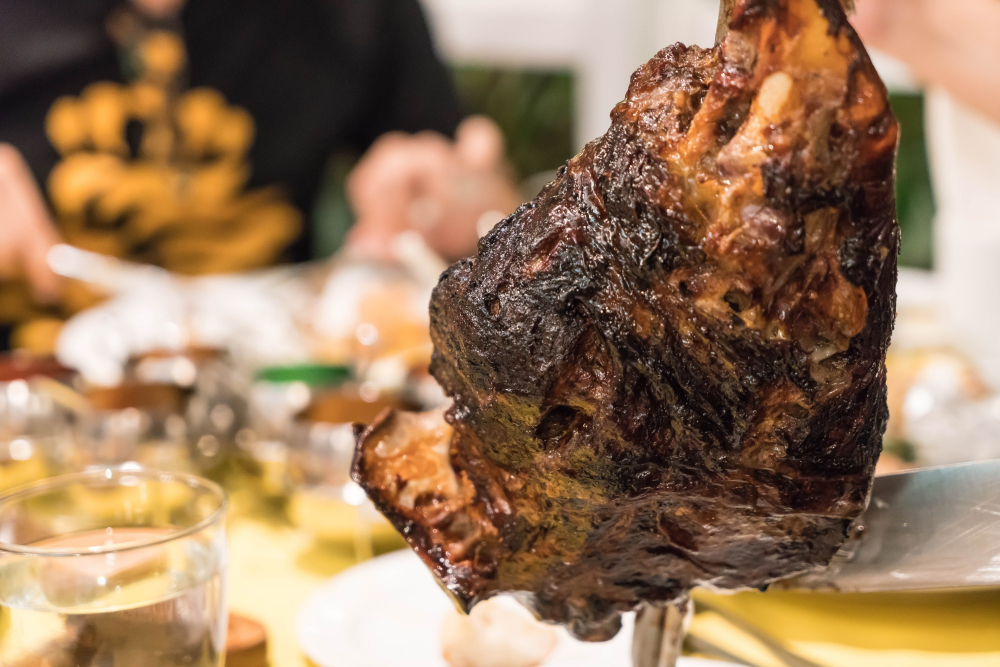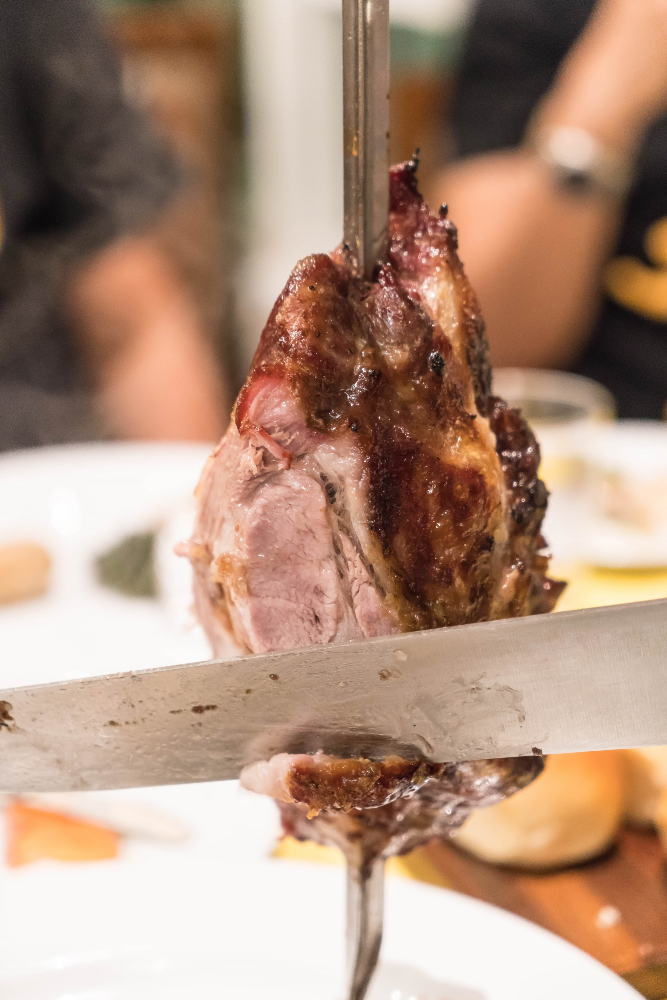Where do you put charcoal on a rotisserie?
Introduction:
If you’re planning to cook on a rotisserie, you may be wondering where to place the charcoal for optimal results. The placement of charcoal plays a crucial role in achieving the perfect cooking temperature and ensuring your food is cooked evenly and thoroughly. In this article, we will explore different methods and techniques to help you decide where to put charcoal on a rotisserie.
Different Rotisserie Setups:
Before delving into the specifics of charcoal placement, it’s important to note that there are various types of rotisseries available in the market. Some rotisseries are gas-powered, while others rely on charcoal or wood for fuel. For those using a charcoal-powered rotisserie, there are two common setups: the offset arrangement and the dual-fire arrangement.
The offset arrangement involves placing the charcoal on one side of the rotisserie, allowing indirect heat to cook the food slowly and evenly. On the other hand, the dual-fire arrangement utilizes charcoal on both sides of the rotisserie, providing direct heat for faster cooking. Both setups have their advantages and can be chosen based on personal preference and the specific requirements of the dish you’re preparing.
Placing Charcoal in an Offset Arrangement:
In the offset arrangement, the charcoal is placed on one side of the rotisserie to create indirect heat. This setup is ideal for slow roasting larger cuts of meat, such as whole chickens, turkeys, or roasts. Here’s a step-by-step guide on how to place charcoal in an offset arrangement:
- Start by cleaning and preparing your rotisserie, ensuring all parts are in working order.
- Open the access door or remove the grate on the side opposite to where you want the heat to come from.
- Arrange your charcoal briquettes in a neat pile on one side of the rotisserie.
- If desired, you can place a drip pan beneath the food to catch any juices or drippings.
- Light the charcoal using a chimney starter or lighter fluid, following the manufacturer’s instructions.
- Carefully place the charcoal onto the grill grate, leaving space between each piece for proper airflow.
- Close the access door or replace the grate, ensuring it fits securely.
Remember to monitor the temperature throughout the cooking process and adjust the amount of charcoal as needed to maintain a consistent heat.
Using a Dual-Fire Arrangement:
The dual-fire arrangement involves placing charcoal on both sides of the rotisserie to create direct heat. This setup is ideal for quicker cooking times and achieving a crispy exterior, perfect for items like whole chicken or small cuts of meat. Follow these steps to place charcoal in a dual-fire arrangement:
- Ensure your rotisserie is clean and ready for use.
- Open the access doors or remove the grates on both sides of the rotisserie.
- Divide your charcoal briquettes evenly on each side of the rotisserie.
- Light the charcoal using a chimney starter or lighter fluid, following the manufacturer’s instructions.
- Place the charcoal onto the grill grates, leaving space between each piece for proper airflow.
- Close the access doors or replace the grates, ensuring they fit securely.
Ensure that the heat is distributed evenly across both sides, and adjust the airflow by partially opening or closing the vents as needed.
Note: It is essential to follow proper safety precautions while working with charcoal and open flames. Make sure to keep a fire extinguisher nearby, avoid using lighter fluid near the heat source, and never leave your rotisserie unattended while in use.
How high should a rotisserie be above coals?
When it comes to rotisserie cooking, one of the most common questions is how high the rotisserie should be placed above the coals. The distance between the rotisserie and the coals can greatly affect the cooking process, so it’s important to get it right for the best results.
Factors to Consider
Several factors come into play when determining the ideal height for your rotisserie above the coals:
- Type of meat: Different cuts of meat require different cooking temperatures and times. Thicker cuts may need to be positioned higher to ensure even cooking, while thinner cuts can be placed closer to the coals for faster searing.
- Cooking method: Are you looking for a slow and low cook or a high-heat sear? This will also impact the distance between the rotisserie and the coals.
- Intensity of the fire: If you have a hot fire with intense heat, you might want to raise the rotisserie higher to prevent burning. Conversely, a cooler fire may require lowering the rotisserie for more direct heat.
General Guidelines
While there isn’t a one-size-fits-all answer, here are some general guidelines to follow:
- For slow and low cooking, position the rotisserie about 18 inches above the coals.
- For high-heat searing, lower the rotisserie to about 12 inches above the coals.
- Keep a close eye on the food and adjust the height as needed to prevent burning or ensure proper cooking.
“Finding the right height for your rotisserie is all about balancing heat intensity and desired cooking outcome.” – BBQ expert
In summary, the ideal height for a rotisserie above coals depends on several factors, including the type of meat, cooking method, and fire intensity. Following general guidelines can help you achieve the desired outcome, but it’s essential to monitor the food closely and make adjustments as necessary. Happy rotisserie cooking!
Can you add a rotisserie to any BBQ?
If you’re a barbecue enthusiast looking to take your grilling game to the next level, you might be wondering if it’s possible to add a rotisserie to your existing BBQ setup. The good news is that in most cases, it is indeed possible to add a rotisserie to any BBQ!
Why would you want a rotisserie?
A rotisserie not only adds versatility to your cooking repertoire but also helps achieve perfectly cooked, succulent meats with a deliciously crispy exterior. Whether you’re planning to roast a whole chicken, a leg of lamb, or even a prime rib, a rotisserie can deliver exceptional results.
How to add a rotisserie to your BBQ
Adding a rotisserie to your BBQ depends on the type of grill you have:
- Charcoal BBQ: If you have a charcoal BBQ, you may need to purchase a separate rotisserie kit that is compatible with your grill. These kits usually include a spit rod, motor, and brackets that attach to your grill. Follow the manufacturer’s instructions for proper installation.
- Gas BBQ: Many gas grills come with optional rotisserie attachments that can be purchased separately. These attachments usually include a spit rod, motor, and mounting brackets designed specifically for your grill model. Consult your grill’s manufacturer or supplier to find the appropriate attachment for your BBQ.
Important considerations
Before adding a rotisserie to your BBQ, here are a few important considerations:
- Grill size: Ensure that your BBQ has enough space to accommodate a rotisserie setup comfortably.
- Weight capacity: Check the weight capacity of your BBQ and ensure that it can handle the weight of the food you intend to cook on the rotisserie.
- Regular maintenance: Rotisseries require regular cleaning and maintenance to ensure they function properly and remain in good condition. Refer to the manufacturer’s instructions for specific care guidelines.
Tip: Before attempting to install a rotisserie, always refer to your BBQ’s user manual or consult the manufacturer to ensure compatibility and for any specific instructions.
With a rotisserie added to your BBQ setup, you’ll be able to enjoy succulent and evenly cooked meats, adding a new dimension to your outdoor cooking experience.
How to Cook a Roast on the BBQ Without a Rotisserie?
Introduction
Cooking a roast on the BBQ without a rotisserie is a great way to infuse delicious smoky flavors into your meat. While rotisseries are handy, they are not always available or affordable for everyone. In this article, we will guide you through a step-by-step process to help you achieve a perfectly cooked roast on your BBQ without a rotisserie.
Choosing the Right Cut of Meat
To ensure a tender and juicy roast, it’s essential to select the right cut of meat. Opt for cuts that are suitable for slow cooking, such as beef brisket, pork shoulder, or leg of lamb. These cuts have enough fat content to keep the meat moist during the cooking process.
Preparing the Meat
Before cooking, it’s important to properly prepare the meat. Start by seasoning the roast with your favorite rub or marinade. Allow it to sit in the refrigerator for a few hours, or preferably overnight, to let the flavors penetrate the meat. Make sure to bring the roast to room temperature before cooking to ensure even cooking throughout.
Indirect Heat Method
To cook the roast, we will use the indirect heat method on the BBQ. Start by preheating half of your grill to medium-high heat, while leaving the other half unlit. This will create the perfect environment for slow cooking.
Place the seasoned roast on the unlit side of the grill, ensuring that it is not directly over the flames. Close the lid and allow the roast to cook slowly with gentle, indirect heat.
Monitoring and Flipping
Throughout the cooking process, it’s important to monitor the internal temperature of the roast using a meat thermometer. Different meats have different optimal cooking temperatures, so it’s essential to refer to a reliable temperature guide for accuracy.
After approximately halfway through the cooking time, flip the roast to ensure even cooking and browning on all sides. This will help develop a delicious crust on the meat.
Resting and Carving
Once the roast reaches the desired internal temperature, carefully remove it from the grill and let it rest on a cutting board for about 15-20 minutes. This resting period allows the juices to redistribute, resulting in a more tender and flavorful roast.
After resting, you can proceed to carve the roast into thin slices. Serve them on a platter, garnished with fresh herbs or accompanied by your favorite sauces.
“Cooking a roast on the BBQ without a rotisserie is a fantastic way to achieve incredible flavors while enjoying the outdoor cooking experience.” – John Smith, BBQ enthusiast.
Now you know how to cook a roast on the BBQ without a rotisserie. With a little patience and attention to detail, you can create a mouthwatering roast that will impress your family and friends at your next BBQ gathering.
Table:
| Meat | Optimal Cooking Temperature |
|---|---|
| Beef Brisket | 195°F (90°C) |
| Pork Shoulder | 190°F (88°C) |
| Leg of Lamb | 145°F (63°C) for medium-rare |
List of Tips for Cooking a Roast on the BBQ Without a Rotisserie:
- Choose cuts of meat that are suitable for slow cooking.
- Season and marinate the meat ahead of time for maximum flavor.
- Preheat only half of the grill to create indirect heat.
- Monitor the internal temperature with a meat thermometer.
- Flip the roast halfway through the cooking time for even browning.
- Allow the roast to rest before carving to retain juices.
What is the Best Fuel for a Rotisserie?
A rotisserie is a fantastic way to cook delicious, mouthwatering food that is evenly cooked and packed with flavor. However, choosing the right fuel for your rotisserie can make a big difference in the final result. Whether you own a gas, charcoal, or electric rotisserie, let’s explore the best fuel options available in the UK.
Charcoal:
Charcoal is a popular choice for rotisserie cooking. It imparts a distinct smoky flavor to the food, enhancing its taste and aroma. Charcoal briquettes are readily available and provide consistent heat throughout the cooking process. They are also more affordable than other fuel options.
Hardwood Lump Charcoal:
If you want to take your rotisserie cooking to the next level, consider using hardwood lump charcoal. Made from natural wood, this type of charcoal burns hotter and cleaner than briquettes. It adds a wonderful smoky flavor to the food and is often preferred by BBQ enthusiasts.
Propane Gas:
For convenience and ease of use, propane gas is an excellent option. With just the turn of a knob, your rotisserie will be up and running. Propane gas provides consistent heat and allows for precise temperature control. It is a clean-burning fuel that won’t leave behind ashes or require much cleanup.
Electricity:
If you don’t have access to outdoor space or prefer a more contained cooking method, an electric rotisserie may be the right choice for you. Electric rotisseries are easy to use and offer consistent heat throughout the cooking process. While they may lack the smoky flavor of charcoal or wood, they are a convenient option for indoor cooking.
“The best fuel for a rotisserie ultimately depends on personal preference and the desired taste. Experiment with different fuels to find your perfect match!”
What foods can you cook on a rotisserie?
A rotisserie is a versatile cooking method that can elevate your meals to new heights. Whether you’re grilling outdoors or using an indoor rotisserie, there are plenty of delicious dishes you can make. Here are some of the best foods you can cook on a rotisserie:
1. Whole Chicken
Cooking a whole chicken on a rotisserie is a classic choice. The rotation ensures even cooking, resulting in a juicy and flavorful bird. Season with your favorite herbs and spices for a mouthwatering meal.
2. Pork Shoulder
A rotisserie is perfect for slow-cooking pork shoulder. This cut of meat becomes incredibly tender and succulent when cooked slowly over indirect heat. Rub it with a mix of spices and let it spin until it’s falling-apart delicious.
3. Lamb Leg
A lamb leg on a rotisserie is a showstopper. The rotating motion allows the fat to baste the meat, resulting in a crispy exterior and tender interior. Season with garlic, rosemary, and lemon for a delightful Mediterranean flavor.
4. Beef Roast
Impress your guests with a perfectly cooked beef roast on a rotisserie. The slow rotation ensures a flavorful crust while keeping the inside moist and tender. Season with a simple blend of salt, pepper, and herbs for a classic roast beef.
5. Vegetables
Don’t limit your rotisserie to just meats! You can also grill vegetables like bell peppers, zucchini, eggplant, and corn. The rotating feature helps to evenly cook the veggies, giving them a delicious smoky flavor.
Pro tip: Baste your meats with marinades or sauces as they rotate on the rotisserie for an extra boost of flavor!
Rotisseries are a fantastic way to cook a variety of foods, from meats to vegetables. The rotating motion ensures even cooking, resulting in delicious and succulent meals. So fire up your rotisserie and get ready for a sensational dining experience!



